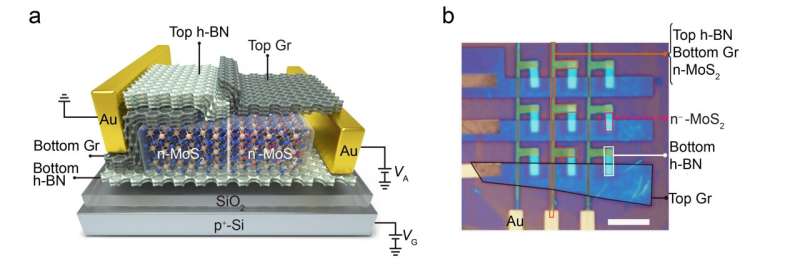Phys.org July 1, 2022
The photodetector is a key component in optoelectronic integrated circuits. Although there are various device structures and mechanisms, the output current changes either from rectified to fully-on or from fully-off to fully-on after illumination. According to researchers in China the device that changes the output current from fully-off to rectified should be possible. They designed a photon-controlled diode based on a n/n− molybdenum disulfide junction. Schottky junctions formed at the cathode and anode either prevent or allow the device to be rectifying, so that the output current of the device changes from fully-off to rectified. By increasing the thickness of the photogating layer, the behavior of the device changes from a photodetector to a multifunctional photomemory with the highest non-volatile responsivity of and the longest retention time. A 3 × 3 photomemory array without selectors shows no crosstalk between adjacent devices and has optical signal-processing functions including wavelength and power-density selectivity…read more. Open Access TECHNICAL ARTICLE

Schematic of a photon-controlled diode fabricated by sandwiching a h-BN layer between a n/n− MoS2 junction and a SiO2/p+-Si back-gate… Credit: National Science Review, nwac088, 10 May 2022